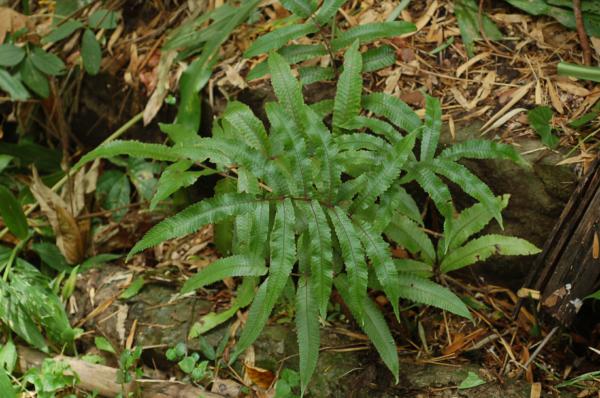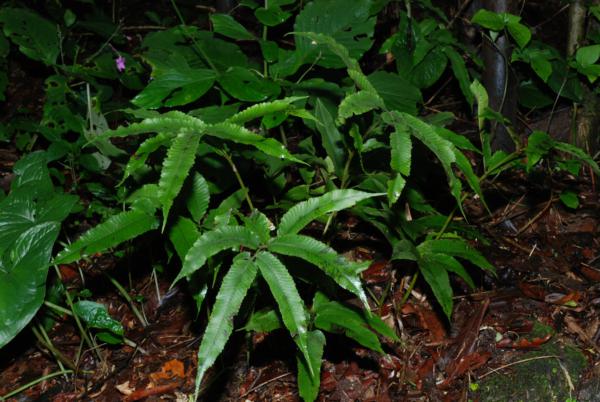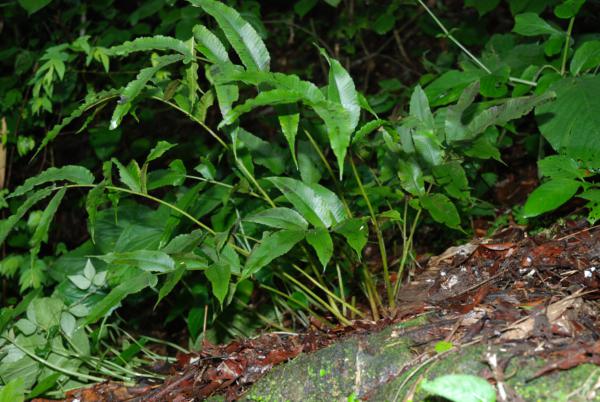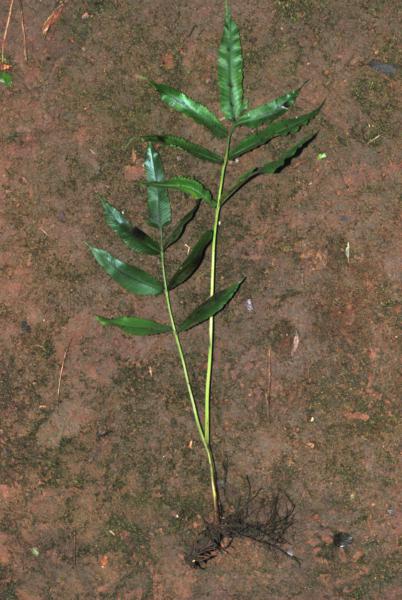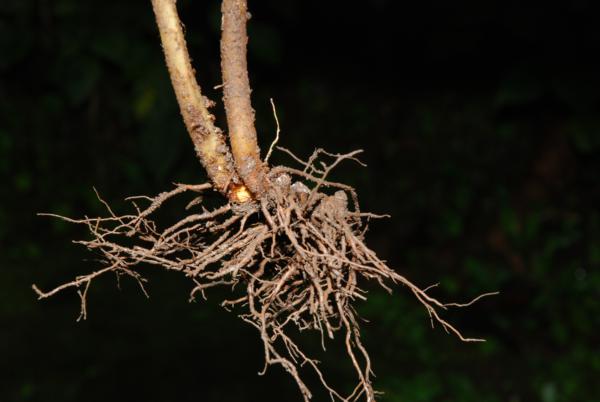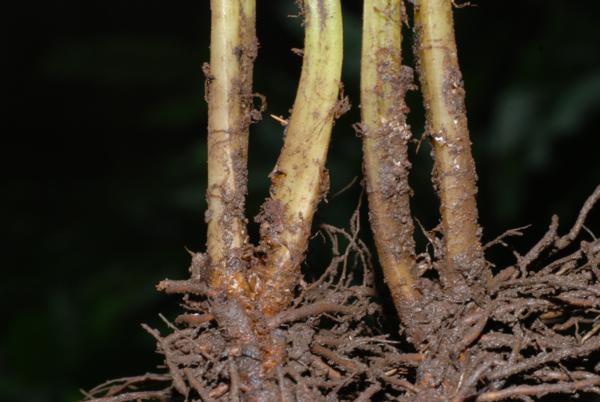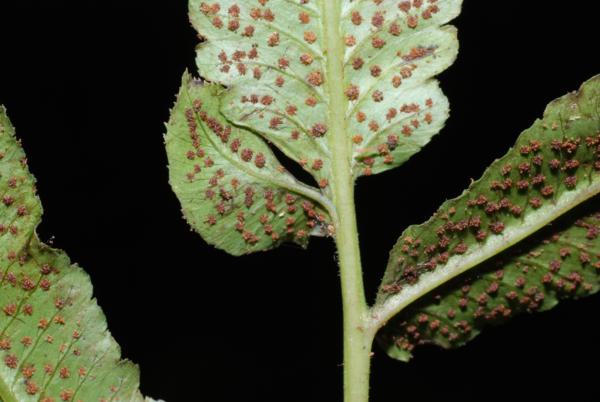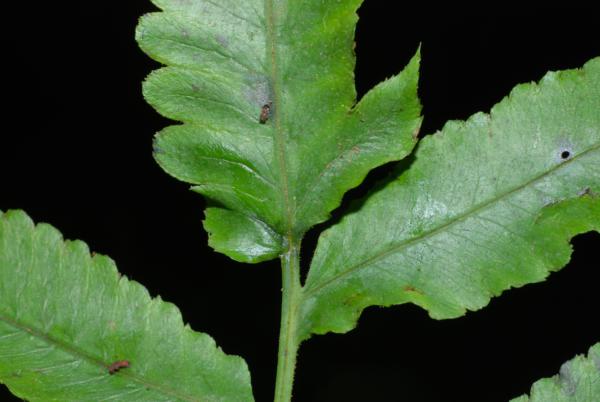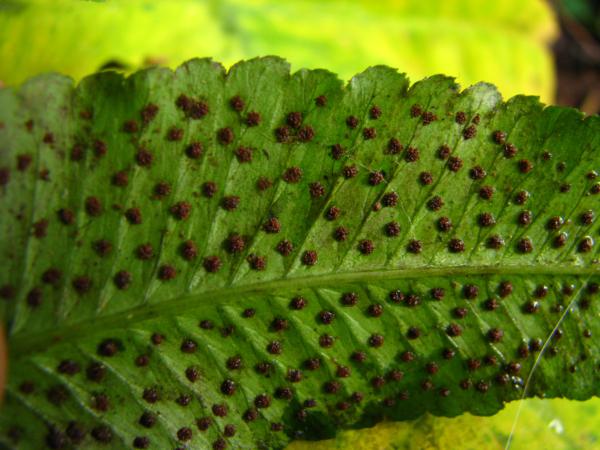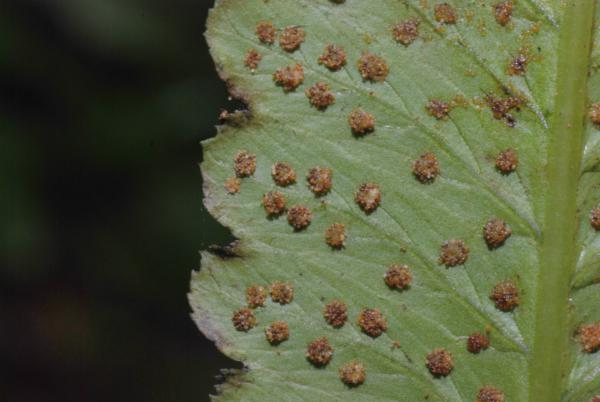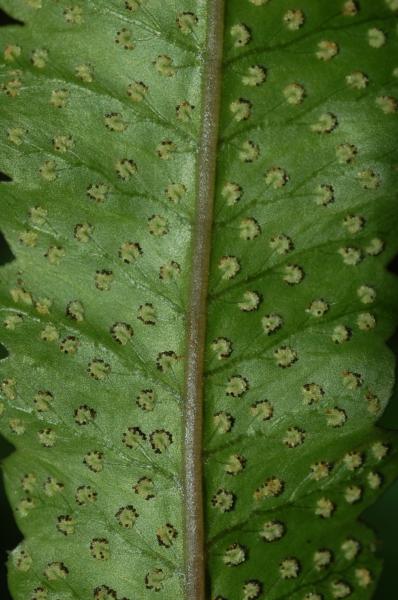
Athyrium cumingianum (C.Presl) Milde
Family
Athyriaceae
Nomenclature
Athyrium cumingianum (C.Presl) Milde, Bot. Zeitung (Berlin) 28: 353. 1870. – Anisocampium cumingianum C.Presl, Epimel. Bot.: 59. 1851 [‘1849’]; Tardieu & C.Chr., Fl. Indo-Chine 7(2): 281, f. 29, 2–3. 1940; Holttum, Dansk Bot. Ark. 23: 243. 1965; Tagawa & K.Iwats., SouthE. Asian Stud. 5: 101. 1967; Tagawa & K.Iwats., Fl. Thailand 3: 444, f. 47.5–7. 1988; Boonkerd & Pollawatn, Pterid. Thailand: 151, 152, 188. 2000; Newman et al., Checkl. Vasc. Pl. Lao PDR: 33. 2007.
Description
Terrestrial. Rhizome short creeping, about 5 mm diam., more or less fleshy, scaly throughout; scales linear-subtriangular, about 3 by 1 mm. Stipes stramineous with brownish base up to 35 cm long, scaly on lower portion, hairy. Laminae imparipinnate, up to 35 by 25 cm; lateral pinnae 2–6 pairs, shortly stalked or sessile, oblong, cuspidate at apex, rounded to narrowly cuneate at base, up to 13 by 3 cm in soriferous pinnae and about 4.5 cm broad in non-soriferous ones, lobed about 1/5 way to costa; lobes oblique, rounded to obtuse at apex with sharp teeth; herbaceous, light green, glabrous or minutely hairy; terminal pinna oblong, acuminate at apex, cuneate, round or cordate at base, lobed at margin sometimes deeply in lower portion; veins pinnate, the veinlets uniting to the opposite ones of the next group, the excurrent veinlets continuous. Sori dorsal, medial, round, irregularly scattered; indusia small, thin, pale, round-reniform, margin very lacerate, usually persistent but buried amongst sporangia and not visible at maturity.
Distribution in Thailand
NORTHERN: Mae Hong Son, Chiang Mai, Chiang Rai, Lamphun, Lampang, Phrae, Tak, Phitsanulok; SOUTH-WESTERN: Kanchanaburi; CENTRAL: Saraburi; SOUTH-EASTERN: Prachin Buri; PENINSULAR: Phangnga.
Distribution in Laos
Champasak.
Distribution in Cambodia
Mondulkiri, Stung Treng.
Wider Distribution
Himalaya, S India, Sri Lanka, Laos, and Philippines.
Ecology
On sandy or muddy slopes in mixed forests at low to medium elevations up to 1100 m alt., usually confined to places completely exposed in the dry season.
Proposed IUCN Conservation Assessment
Least Concern (LC). This species is widespread and not under any known threats.
Notes
The fleshy rhizome is similar to that of Tectaria manilensis and Tectaria tenerifrons , both of which are known in the mixed forests of seasonal areas. This seems to be an adaptive feature for survival when completely exposed in the dry season.
Voucher specimens - Thailand
Middleton et al. 4969, Mae Hong Son, Namtok Pha Suea Forest Park (E).
Voucher specimens - Laos
Maxwell 98-1049, Champasak (CMU); Thorel s.n., Khon (P).
Voucher specimens - Cambodia
Long et al. CL436, Mondulkiri, Bousra Waterfall (P); Thorel s.n., Stung Treng (P).
Habit
Habit
Habit
Whole plant
Rhizome
Bases of stipes
Base of terminal pinna from beneath with characteristic small lobe
Base of terminal pinna from above with characteristic small lobe
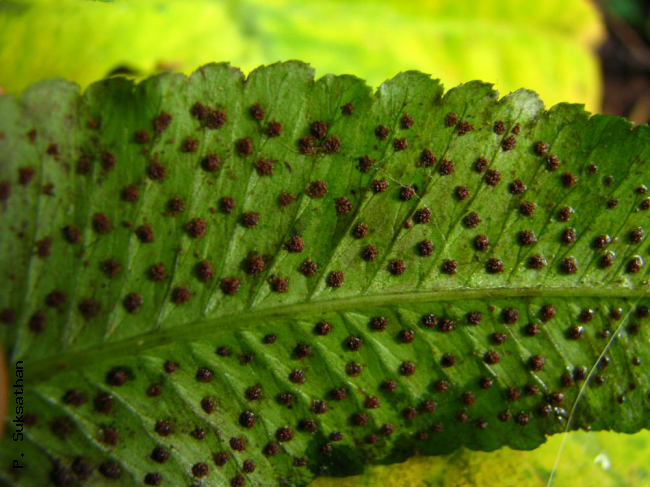
Sori
Sori
Young sori
Site hosted by the Royal Botanic Garden Edinburgh. Content managed by Stuart Lindsay, Gardens by the Bay, Singapore and David Middleton, Singapore Botanic Gardens. Last updated 24 January 2012
